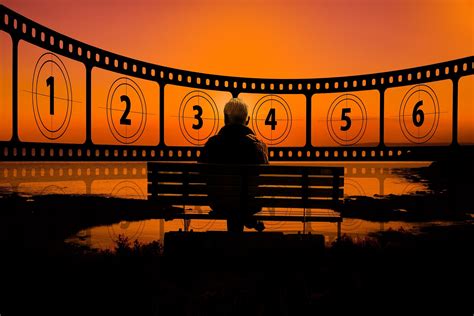CHAINED IN PLATO’S CAVE: WELCOME TO THE CINEMA OF GRAND ILLUSIONS
by Jeemes Akers
“Welcome to the Grand Illusion
Come on in and see what’s happening
Pay the price, get your tickets for the show …
But don’t be fooled by the radio
The TV or the magazines
They show you photographs of how your life should be
But they’re just someone else’s fantasy.”
Styx
The Grand Illusion, 1977
“We no longer live through our own innate primary human sensory abilities. Rather, we experience it mediated through screens, virtual walls that sever us from our intrinsic senses and define the world for us. Screens interpose themselves between us and the real world, projecting information that is purportedly equal to reality but is at best only ever a rough approximation, one that is easily manipulated.”
Marc Goodman
Future Crimes
“Just yesterday I read a news story about a new video game [in the UK] installed above urinals to stop patrons getting bored: you control it by sloshing your urine stream left and right. Read that back to yourself and ask if you live in a sane society.”
Charlie Brooker[1]
I always enjoy teaching Philosophy—whether at the high school or college levels—because it provides an opportunity for me to discuss the Greek philosopher Plato’s (428-348 B.C.) famous “Allegory of the Cave.” The allegory provides a unique vantage point to discuss how we as humans perceive truth and reality, and whether there is any higher truth to existence. If ever there was a time to have this discussion it is now. In our age, it is becoming increasing difficult to separate truth from misinformation, and media narrative manipulation from news.
Sigh.
As a brief introduction, Plato’s allegory is taken from his work Republic and appears in the form of a dialogue between Plato’s brother (Glaucon) and Plato’s mentor Socrates. The allegory portrays a group of people chained to the interior of a cave all their lives, facing a blank wall. They watch shadows projected on the wall from puppet-like figures passing in front of a fire behind them. The shadows constitute the chained observers’ respective reality; they even give names to the shadows. If one escapes and experiences a completely different reality outside the cave and returns to tell them, they won’t accept the new truth.
Let me move this forward to our present day. Instead of a cave wall, we watch screens—TV, movie, computer, smartphone screens—that shape our contemporary view of reality. This, no doubt, was what techno-critic Charlie Brooker had in mind when he named his popular sci-fi series the “Black Mirror.” In his words, the title theme refers to our modern world of screens, the ones “you’ll find on every wall, on every desk, in the palm of every hand: the cold, shiny screen of a TV, a monitor, a smartphone.”[2]
In today’s world, unnamed elites armed with a new suite of algorithms, AI, social media platforms, and without any sense of moral scruples, now manipulate the puppet figures behind us. In far too many cases, we have misinterpreted their shadows for truth.
As agents of human-based, relativistic truth (as opposed to covenant-based absolute truths), they even seek to replace the light source behind it all (but that is another missive altogether).
In my mind’s eye, I envision—for the purposes of this missive—the whole process being moved out of Plato’s allegorical cave into a present-day, giant cinema complex.
Welcome to the 2022 Grand Illusion Theater!
How does it work?
Many years ago, when I was doing my graduate studies in history (on the G.I. Bill) at Texas Christian University, we were visited by a group of graduate students from the Soviet Union. The visit took place at the height of the Cold War. I took the group to visit various historical sites in the Fort Worth, Texas area. Since they were going to be in town for a few days, I took them by a local grocery store in case they needed a few items to tide them over.
“Oh no,” one of the young ladies said, “we know capitalist food producers in your country lace the canned goods with poison.”
At the time, I thought her viewpoint was totally preposterous. As one chained in the Soviet theater of Grand Illusions, she was the product, no doubt, of years of a steady stream of propaganda images on the screen. (But, then again, that was decades before I had my own struggle with colon-rectal cancer).
Meanwhile, our own media was bombarding us with pictures and film sequences showing empty shelves in Soviet stores and long, long lines of ordinary citizens cuing up for scarce supplies of food and essential provisions.
I have never forgotten the juxtaposition of those two ideas.
But then again, I never expected, in my lifetime, to see the specter of empty shelves or government-imposed lockdowns here in the United States. Nor, before the pandemic, had I heard the phrase “serious supply-chain issues.” (I’ll confess: my wife and I have been secretly stockpilingCharmin toilet paper for the last couple years.)
The young lady from the former Soviet Union and I have—for all intents and purposes—switched seats in the Grand Illusion Theater.
What is going on?
Last week, President Biden warned Americans that major supply shortages may lie over the horizon even as, according to one of my favorite Christian blogs, there have been at least 16 major fires at key food production facilities in the United States since the start of 2022.[3] I used to warn my students at the College of the Ozarks that we are in a war but just don’t know it: are these merely the most recent reverberations of a long-standing hybrid war in the shadows? Of course, Biden is blaming Putin’s war for the shortages and inflated food and gas prices (American presidents of both parties have an infinite capacity to throw someone else under the bus rather than take responsibility for poor policy decisions).
Welcome to the Grand Illusion Theater!
If you have lived long enough, you’ve seen most of these movies before.
As I was mulling these things over, it occurred to me that my wife and myself—along with tens of millions of other Americans—are trapped like lemmings inside a giant mall-like cinema. Most of us are huddled inside the same cavernous rooms, sitting in the latest comfortable seats, watching gigantic screens in the front of the theater.
I’m not even sure how I got here.
I only know I’m here.
We all watch the same “life-movies” on the screen.
I have no idea who runs the projector, who decides what movies are to be shown, how long they will play, or when—or if—the intermission will come.
Everything is beyond our control.
In the interest of page space and time, I’d like to walk us down the corridor of this modern-day allegorical cinema, particularly the cinema section that features “coming attractions.” As I peer down the corridor, I notice the advertising billboard placards that are posted, hallway hawkers seeking to steer passing individuals into the largest theaters, and the crowds (with mindless stares) that are herded in ways they may or may not desire. The marquees overhead of the doors of four theaters, in particular, scream out the headlines that catch my attention: “The Coming War,” “The Latest Pandemic Variant” (mandatory masks, handed out at the doorways, are required for admission), “Looming Food and Supply Shortages,” and “Climate Change” (this fourth marque is sort of faded, as though it had been there for quite a while; indeed, I could barely make out the previous lettering underneath which said “Global Warming”).
I slip briefly inside the first theater, “The Coming War.” The huge amphitheater is dominated by a massive screen in the front. The eyes of those in the audience are transfixed by the images on the screen. A steady stream of videos from the ongoing Russo-Ukraine War dance across the screen. Statements of Western leaders are spliced in-between the scenes of carnage (mostly the same footage of bombed-out apartment complexes, destroyed Russian tanks, downed helicopters, and overhead drone shots). As I watch, German Chancellor Olaf Scholz and his political allies insisted the audience was in a Zeitenwende (a watershed moment and historical turning point)[4] stemming from Russia’s ill-advised invasion of Ukraine. Large overhead speakers (the latest surround-sound system) carry the faint, but discernible, sounds of beating war drums. I wonder if the others seated in the theater can hear them. Now familiar stock footage of Ukraine’s President Volodymyr Oleksandrovych Zelensky—the overnight sensation who has been transformed by the elites in the projection room from a local comedian into a global hero before our very eyes—appears in one set of images making virtual presentations to the United Nations and the U.S. Congress, in another dressed in camouflaged fatigues. Each appearance on the screen is greeted by a ripple of applause from the crowd. By contrast, the visual images of a bloated, sickly-looking Russian President Vladimir Putin are met, predictably, with a smattering of boos.
At the same time, I notice from my vantage point, uniformed attendants scurrying down the theater aisles handing out free popcorn and sodas to the preoccupied viewers. Unbeknownst to those in the audience, the food and drink is laced with just the right amount of fear and trepidation. Moreover, almost no one in the crowd notices the diversionary subliminal messages interspersed with the visual images and narrative; well-rehearsed patriotic messages directed at those sitting on the right-hand side of the theater, and narratives hidden beneath humanitarian layers on the left-hand side. As with most of the cinema theaters, virtually no one sat in the middle sections. As the viewers ate their fear-laced popcorn, a brief but effective subliminal message—directed toward both sides of the theater—featured a mushroom cloud.
The images were a bit different—yet strangely the same—on two side screens separated from the main screen. The screens on both side panels were dominated by footage featuring a larger-than-life Chinese President Xi Jinping shaking hands with Putin, as ultranationalist Chinese music—musically mixed with the war drums—wafted in the background. Visual images of new Chinese drones, hypersonic missiles, quantum computers, ships, submarines and a sweeping panorama of goose-stepping military units played in the background. As I watch there appears on the screen a visual clip of high-ranking Pentagon Space Force and cyber officials, after tendering their resignations, warning that the U.S. had already lost the “technological battle against China.”[5] Almost instantly, I noticed a targeting map of Taiwanese military sites on the screen. But most of the crowd—preoccupied by the present Ukrainian crisis—had their eyes glued to the main screen in front and paid far less attention to the side screens.
Behind me, a sinewy middle-aged man with curly hair whispered in my ear: “it’s all Trump’s fault you know.” My friends later told me he had not changed his tune since 2016, nevertheless, he was a fixture in every theater.
But I had seen this show before. It was sponsored by the same military-intelligence-industrial-complex that had been running movies regularly in the theater since the Cold War. The only thing that had changed was the techno-complexity (and expense) of the weapons’ systems: the hands in the pockets of the politicians, the use of tried-and-true messaging patterns, and the use of war to divert the audience’s attention from domestic policy failures, were all old refrains.
Indeed, I stood there of two minds: as a Vietnam veteran and based on my many years of service in the intelligence community, I am unabashedly pro-American and pro-military; but, on the other hand, how do I ignore the steady drumbeat for war being orchestrated by the elites?
Maybe some of you face the same quandary.
So, a bit perplexed, I left and entered the next theater, “The Latest Pandemic Variant,” picking up a mask at the door. There was a large crowd. Again, I stood in the back. The same uniformed vendors—some of whom wore hospital-looking scrubs—distributed popcorn, pretzels and drinks. Little has changed about the visual images on the front screen since late 2019: we have watched the same endless stream of lockouts, social distancing and mask regulations, amid the never-quite-realized promises of dozens of mRNA vaccines, all of which led to shuttered churches (but not “essential” bars and nightclubs) as well as closed or understaffed restaurants, factories and stores. As I scanned the faces in the audience, I thought I noticed definite signs of Covid-19-fatigue etched on most their faces.
Most of the visual images playing on the screen today were from China’s largest city Shanghai, some 25-26 million inhabitants, now locked down for the last several weeks due to the fast-spreading SARS-Covid-19 Omicron BA.2 subvariant[6] and focal point for China’s zero-tolerance policy. In China’s largest city, some 450,000 Covid-19 cases (36 deaths are attributed to the disease) have been reported since March 1, 2022.[7] There was drone footage showing emergency vehicles and humans dressed in white hazmat uniforms hauling away individuals from ordinary apartments. In America, our screen showed a nascent rebellion of sorts against the Chinese government’s clumsy lockdown efforts (based largely on social media posts that were quickly censored and pulled down); but in the rest of China—where multiple cities remain locked down—few hear about this discontent.[8]
I felt a dull ache in the pit of my stomach. Like many others, I was hoping that these endless Covid-related sequels were reaching their end—like the last pitiful episode of The Planet of the Apes—and we could move on with normal life. Disgruntled, I turned to leave the theater (as Anthony Fauci’s face again appeared on the screen), tossing my mask in the recycle bin.
The show playing at the third theater is what concerned me the most. While the other two theaters hyped the problems to enhance political control, among other things, the show playing here, “Looming Food and Supply Shortages,” was largely under-reported. The vendors had just started to pass out the fear-laced food and drinks in the slowly filling auditorium. For the first time, I noticed a portal, protected by a thick curtain, connecting the theater with the previous two I had just visited. It was only then that I realized that the issues of the day—and the subsequent messaging—are somehow interconnected. Similar secret passages, I assume, connect the elites running the equipment in the back rooms where the images were projected.
These spiderwebs of connections are everywhere. In Shanghai, for example, Covid-related lockdowns mean (among other things) that in the city’s port, Shanghai-Ningbo—the world’s busiest container port—more than 300 container vessels are on hold (a five-fold increase over the last two and a half weeks).[9] This has clogged port activities around the world, with container ships queuing up for days in some of the worst congestion ever recorded.[10] Experts have pointed out, for example, that Shenzhen’s Covid-related lockdowns in late March “will have ripple effects in terms of manufacturing backlogs, shipping delays, and congestion that are as big as those caused by the Suez Canal blockage in March 2021.”[11]
In addition, the Russo-Ukraine conflict has accelerated a global shortage of wheat, fertilizer (fertilizer prices are now 40 percent higher than before the invasion), neon (a gas needed for lasers used in the chip-making process),[12] nickel, aluminum and sunflower oil. These shortages have caused global commodity prices to skyrocket (and are likely to produce food shortages in Africa and the Middle East).[13] More than a million containers due to travel to Europe from China—typically shipped by land through Russia—must now travel by sea as the sanctions start to bite.[14] Moreover, such shortages will be exacerbated by weather-related wheat crop shortages in the U.S. Midwest.[15]
We are now eating last year’s crops.
To make matters worse, a horrific bird flu (HPAI H5N1) pandemic—not yet two months old—is sweeping across America like wildfire; the death toll for chickens and turkeys has reached an estimated 17 million birds, highly pathogenic avian influenza has now been confirmed in 23 states, and the price of eggs (already up over 11 percent) will soon go through the roof.[16]
On the energy front, domestic oil and gas producers are struggling with inflation, supply chain lags and labor shortages—all things that will make it difficult to ramp up quickly and cost-effectively.[17] (One energy CEO says it will take 18 months to grow production beyond current projections to deal with supply and labor shortages).[18]
Indeed, the supply chain crisis is now in its third year. Some economists already are warning that the average American should budget an extra $5,200 this year for higher prices.[19]
A perfect storm is brewing over the horizon.
But we can’t take our eyes away from the screens depicting this slow-rolling disaster lying ahead. Indeed, many of us will watch, in real time, as a massive shortage of goods and services descend upon us, the likes of which we’ve never seen in this country or, as one professor of supply chains recently remarked “a whole flock of black swans coming at us.”[20] I hope I’m wrong; maybe I’m looking at the screen images through a distorted prism. But if I’m right, what we will experience in the months ahead will make the lines of people we used to see in the Soviet Union pale by comparison.
I shuffled out of the third theater.
I decided against viewing the screens in the fourth theater. The message—and the orchestrated fears buttressing it—were all too familiar to me.
As I glanced further down the corridor, I saw several marques on topics like “CRISPR and the Biogenetic Revolution,” “The Great Reset,” “The End of Fiat Currency,” and “The Coming War in the Middle East.” Large crowds milled around the doors of each of these, ready to enter.
Then my attention was captured by a small, ordinary-looking theater at the very end of the corridor. Very few people entered through the doors. The marque’s coming attraction flashed in bright neon lights: “Jesus Is Coming Soon.” But almost everybody passed by the theater as though it didn’t exist. Heavy scales covered their eyes and pod devices—blasting the noise of this world—prevented them from seeing and hearing the message on the marque.
I heard that there were no fear-tainted popcorn or drinks allowed in the theater and all subliminal screen messages were forbidden. The presentation was free. In contrast to the glitzy distractions and worldly narratives featured in the other theaters, the screen portrayed only one simple message: Jesus Christ, the Messiah, is the Way, the Truth and the Life.
I started walking toward the doors of the theater: inside was the only message I wanted to see and hear, the only coming attraction that would really satisfy me … the true end of the grand illusions.
[1] Charlie Brooker, “Charlie Brooker: the dark side of our gadget addiction,” The Guardian, Dec 1, 2011. Brooker was the creative genius behind the UK Netflix sci-fi anthology Black Mirror, which ran from 2011-2019, and explores technology and its side effects. For those interested in this topic, watch the second episode in Series 5, “Smithereens” (2019).
[2] Brooker, “the dark side.”
[3] Michael Snyder, “A List Of 16 Major Fires That Have Occurred At Key Food Industry Facilities In The U.S. Since The Start Of 2022,” The Economic Collapse, Apr 21, 2022.
[4] Ishaan Tharoor, “The war in Ukraine and a ‘turning point in history,’” The Washington Post, Apr 4, 2022.
[5] “’American Defeat’: Pentagon Official Speaks On Reason For Resignation,” BlabberBuzz, Apr 21, 2022.
[6] Evelyn Cheng, “Omicron ‘stealth’ variant BA.2 is spreading rapidly in China,” CNBC, Mar 24, 2022.
[7] See, among others, Cao Li, “Shanghai to Continue Strict Covid-19 Measures Despite Drop in Cases,” The Wall Street Journal, Apr 22, 2022.
[8] Shen Lu and Liyan Qi, “What Shanghai Is Going Through Is News To Many in the Rest of China,” The Wall Street Journal, Apr 23, 2022.
[9] Laura He, “Port delays are getting worse in Shanghai. That’s very bad news for global supply chains,” CNN Business, Apr 1, 2022.
[10] Knight, “The Supply Chain.”
[11] Ibid.
[12] Chris Isidore, “Why the global supply chain mess is getting worse,” CNN Business, Mar 30, 2022.
[13] Will Knight, “The Supply Chain Crisis Is About To Get a Lot Worse,” WIRED, Mar 28, 2022.
[14] Ibid.
[15] See, Michael Snyder, “Severe Drought And ‘Dust Bowl Conditions’ Threaten To Create A Disastrous Winter Wheat Harvest In The U.S.,” The Economic Collapse, Mar 17, 2022.
[16] Michael Snyder, “Nearly 17 million Dead Chickens and Turkeys And Counting—America’s Bird Flu Pandemic Reaches The ‘Catastrophic’ Stage,” The Economic Collapse, Mar 31, 2022.
[17] Dan Eberhart, “Supply Chain Woes, Inflation Crimp U.S. Producers’ Growth Potential,” Forbes, Apr 2, 2022.
[18] Ibid.
[19] Keith Griffith, “President of Black Rock Investment firm warns an ‘entitled generation’ needs to brace for shock of shortages and higher inflation: Experts warn Americans will pay an EXTRA $433 a month for basic goods this year,” Daily Mail, Mar 30, 2022. Nearly half of these expenses will go for food and energy.
[20] Will Knight, “The Supply Chain Crisis Is About To Get a Lot Worse,” WIRED, Mar 28, 2022.




